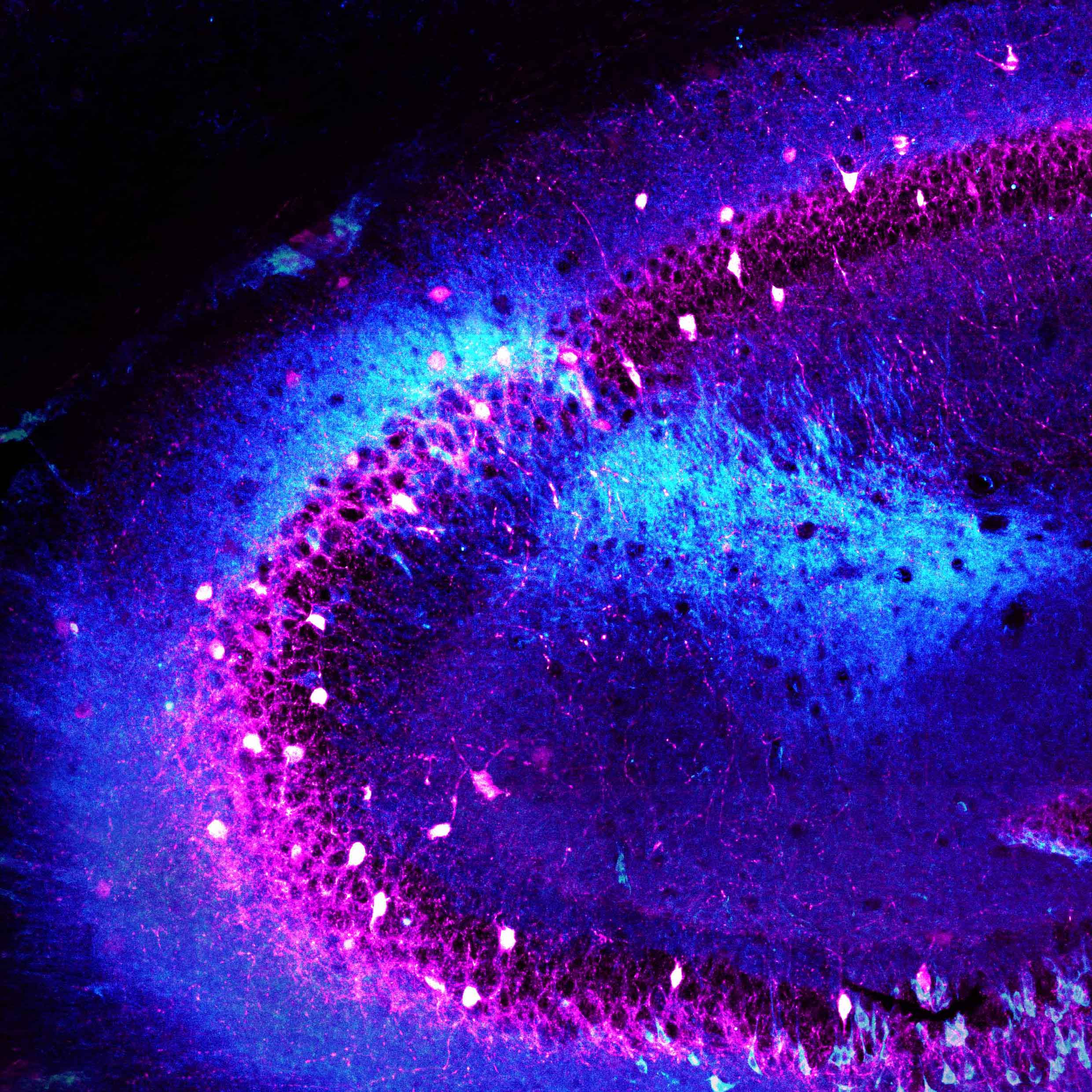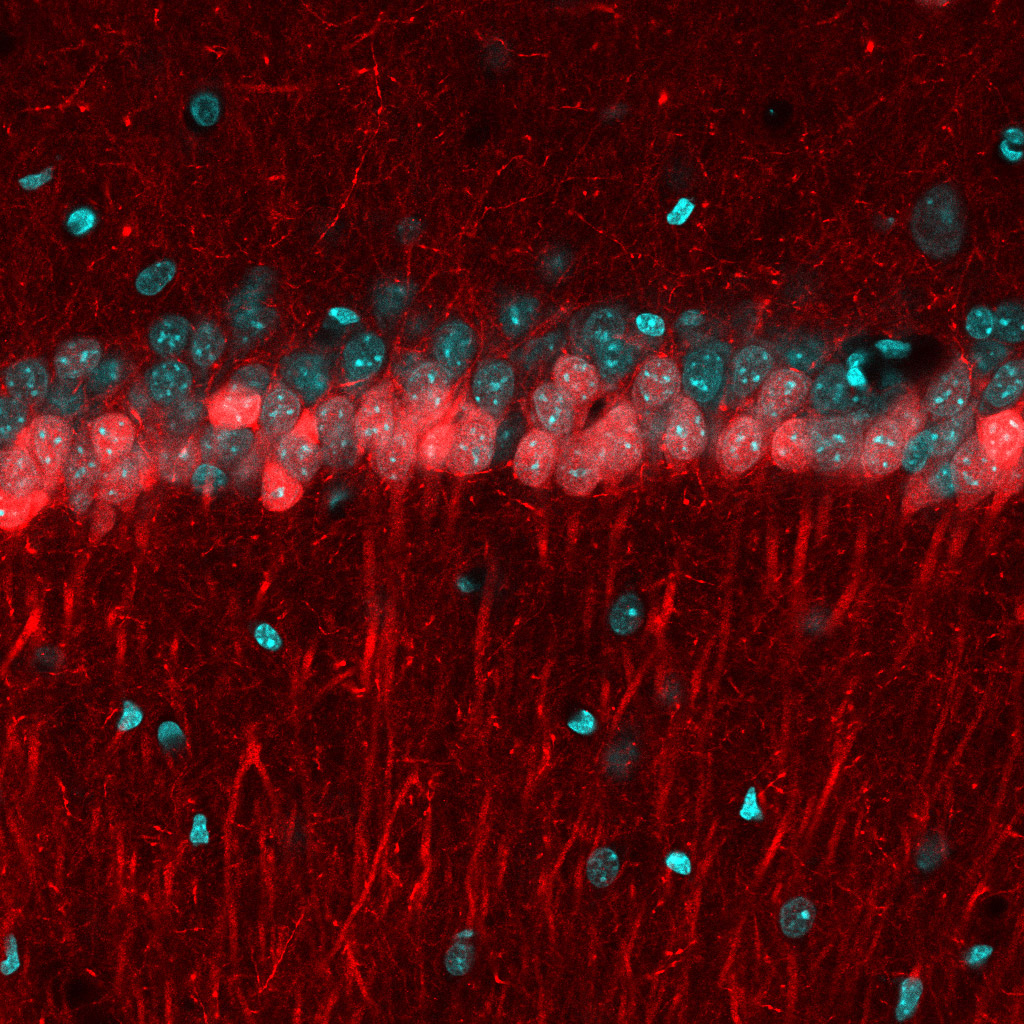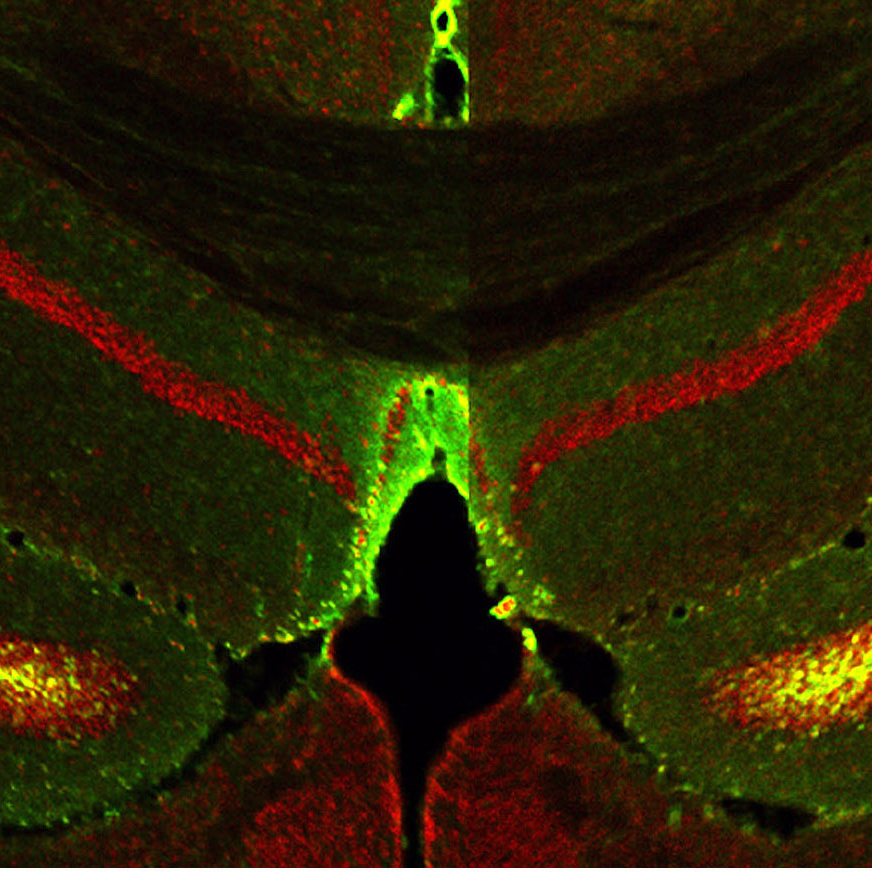Columbia University Medical Center (CUMC) researchers have determined that a small region of the hippocampus known as CA2 is essential for social memory, the ability of an animal to recognize another of the same species. A better grasp of the function of CA2 could prove useful in understanding and treating disorders characterized by altered social behaviors, such as autism, schizophrenia, and bipolar disorder. The findings, made in mice, were published on Feb. 23, 2014, in the online edition of Nature.
Scientists have long understood that the hippocampus—a pair of seahorse-shaped structures in the brain’s temporal lobes—plays a critical role in our ability to remember the who, what, where, and when of our daily lives. Recent studies have shown that different subregions of the hippocampus have different functions. For instance, the dentate gyrus is critical for distinguishing between similar environments, while CA3 enables us to recall a memory from partial cues (e.g., Proust’s famous madeleine). The CA1 region is critical for all forms of memory.“However, the role of CA2, a relatively small region of the hippocampus sandwiched between CA3 and CA1, has remained largely unknown,” said senior author Steven A. Siegelbaum, PhD, professor of neuroscience and pharmacology, chair of the Department of Neuroscience, a member of the Mortimer B. Zuckerman Mind Brain Behavior Institute and Kavli Institute for Brain Science, and a Howard Hughes Medical Institute Investigator. A few studies have suggested that CA2 might be involved in social memory, as this region has a high level of expression of a receptor for vasopressin, a hormone linked to sexual motivation, bonding, and other social behaviors.
Because several neuropsychiatric disorders are associated with altered social behaviors, our findings raise the possibility that CA2 dysfunction may contribute to these behavioral changes.
To learn more about this part of the hippocampus, the researchers created a transgenic mouse in which CA2 neurons could be selectively inhibited in adult animals. Once the neurons were inhibited, the mice were given a series of behavioral tests. “The mice looked quite normal until we looked at social memory,” said first author Frederick L. Hitti, an MD-PhD student in Dr. Siegelbaum’s laboratory, who developed the transgenic mouse. “Normally, mice are naturally curious about a mouse they’ve never met; they spend more time investigating an unfamiliar mouse than a familiar one. In our experiment, however, mice with an inactivated CA2 region showed no preference for a novel mouse versus a previously encountered mouse, indicating a lack of social memory.”
In two separate novel-object recognition tests, the CA2-deficient mice showed a normal preference for an object they had not previously encountered, showing that the mice did not have a global lack of interest in novelty. In another experiment, the researchers tested whether the animals’ inability to form social memories might have to do with deficits in olfaction (sense of smell), which is crucial for normal social interaction. However, the mice showed no loss in ability to discriminate social or non-social odors.
In humans, the importance of the hippocampus for social memory was famously illustrated by the case of Henry Molaison, who had much of his hippocampus removed by surgeons in 1953 in an attempt to cure severe epilepsy. Molaison (often referred to as HM in the scientific literature) was subsequently unable to form new memories of people. Scientists have observed that lesions limited to the hippocampus also impair social memory in both rodents and humans.
“Because several neuropsychiatric disorders are associated with altered social behaviors, our findings raise the possibility that CA2 dysfunction may contribute to these behavioral changes,” said Dr. Siegelbaum. This possibility is supported by findings of a decreased number of CA2 inhibitory neurons in individuals with schizophrenia and bipolar disorder and altered vasopressin signaling in autism. Thus, CA2 may provide a new target for therapeutic approaches to the treatment of social disorders.
###
The paper is titled, “The hippocampal CA2 region is essential for social memory.”
The study was supported by a Ruth L. Kirschstein F30 National Research Service Award from the National Institute of Mental Health and the Howard Hughes Medical Institute.
The authors declare no financial or other conflicts of interests.
This article first appeared on CUMC News.



